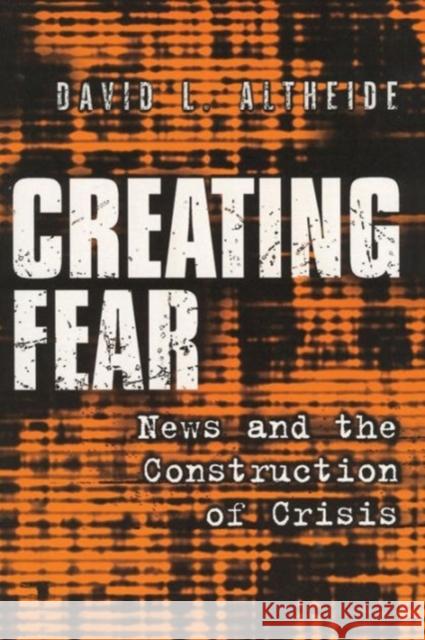Creating Fear: News and the Construction of Crisis » książka
Creating Fear: News and the Construction of Crisis
ISBN-13: 9780202306605 / Angielski / Miękka / 2002 / 237 str.
Creating Fear: News and the Construction of Crisis
ISBN-13: 9780202306605 / Angielski / Miękka / 2002 / 237 str.
(netto: 222,48 VAT: 5%)
Najniższa cena z 30 dni: 226,63
ok. 22 dni roboczych
Bez gwarancji dostawy przed świętami
Darmowa dostawa!
Taking advantage of electronic information bases, Altheide, whose previous interpretive studies of the mass media are well known, uses a "tracking discourse" method to show how the nature and use of the word "fear" by mass media have changed over the years. His analysis examines how some of the topics associated with fear (e.g., AIDS, crime, immigrants, race, sexuality, schools, children) have shifted in emphasis, and how certain news organizations and social institutions benefit from the exploitation of fear. This book is about fear and its expanding place in our public life. The author documents the rise of a "discourse of fear" in the present era: the pervasive communication, sym-bolic awareness, and expectation that danger and risk surround us. Altheide offers explanations of how this occurred and suggests some of its serious social consequences. In doing so, he focuses on the nature and use of social power and social control. The mass media play a significant role in shaping social definitions that govern social action. Relatedly, his methodological and theoretical foundation in classical social theory, existential-phenomenology, ethnomethodology, and symbolic interactionism leads him to view social power as the capacity to define situations for self and others. Creating Fear is focused on sorting out the ways that the mass media and popular culture help define social situa-tions. It helps understand the nature, process, and organiza-tion of mass media operations, including news procedures, perspectives, and formats. It recognizes the need to expand our methodological frameworks to incorporate new infor-mation technologies and databases and to ask different ques-tions. This volume, which attempts to break the circle of fear discourse, will be of interest to sociologists, communi-cations scholars, and criminologists.











